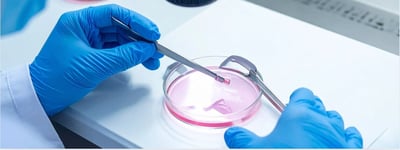.jpg)
29 February 2024
Endometriosis- what you need to know, from a fertility expert
What is Endometriosis?
Endometriosis is a common condition in women, where tissue that behaves like the lining of the womb is found outside the womb itself. The condition is estimated to affect around two million women in the UK. Most of them are diagnosed between the ages of 25 and 40.
Endometriosis is a long-term condition that causes painful or heavy periods. It often also causes pain in the lower abdomen (tummy), pelvis or lower back, as well as fertility problems. It may also contribute towards a lack of energy and depression.
Endometriosis can also cause pain during sex (dyspareunia). The triad of symptoms: painful periods and painful sex leading to infertility is typical of endometriosis. The best natural cure for endometriosis is pregnancy.
However, the symptoms of endometriosis vary significantly and some women have few symptoms or no symptoms at all. Dr Venkat, Director at Harley Street Fertility Clinic, shares her insights about fertility and endometriosis.
Endometriosis and fertility
One of the main complications of endometriosis is difficulty getting pregnant or problems with fertility. IVF treatment outcomes in individuals with endometriosis involves strategies aimed at improving fertility, enhancing embryo implantation, and reducing the impact of endometriosis on reproductive success. Here are some ways to optimize IVF treatment outcomes when dealing with endometriosis:
1. Before starting IVF, individuals with endometriosis should undergo a comprehensive fertility check-up to assess the severity of the condition, evaluate ovarian reserve, and identify any other potential factors that may impact fertility.
2. Medical Management of Endometriosis. Depending on the severity of symptoms and the extent of endometriosis, medical management may be initiated before IVF treatment. Hormonal therapies may be prescribed to suppress endometriosis, reduce inflammation, and improve ovarian response to fertility medications.
3. Surgical Intervention. There is controversy regarding the removal of endometrioma in ovaries by laparoscopy. This inadvertently removes healthy ovarian tissue in addition, leading to a decrease in ovarian reserve. We, at the Harley Street Fertility Clinic, drain the endometriotic cysts with antibiotic cover before commencing stimulation for IVF. This helps with the number and quality of eggs.
4. Ovarian Stimulation Protocols. Tailoring ovarian stimulation protocols based on individual patient factors and ovarian reserve is crucial for optimising IVF outcomes in individuals with endometriosis. Some clinicians prefer to use long protocol with GnRH analogue downregulation to suppress endometriosis, while others tend to use the short antagonist protocol.
5. Embryo Transfer Techniques. Utilizing advanced embryo transfer techniques such as mock embryo transfer can help optimize the placement of embryos within the uterine cavity, maximizing the chances of successful implantation.
6. Luteal Phase Support. Adequate luteal phase support with progesterone supplementation following embryo transfer is essential for promoting endometrial receptivity and supporting early pregnancy development. Individualized luteal phase support protocols may be tailored based on the patient's hormonal profile and endometrial receptivity.
7. Genetic Testing. Preimplantation genetic testing (PGT) may be considered to screen embryos for chromosomal abnormalities before transfer, particularly in individuals with endometriosis who may have a higher risk of implantation failure or miscarriage.
8. Immune Modulation treatments. Endometriosis is an immunological condition and it is associated with inflammation of the tissue. Under the circumstances, the Natural-killer cell (NK cell) activity can be high and Th1:Th2 cytokine ratio can be elevated, which interfere with implantation of the embryo. Immunomodulation therapy such as intralipid infusion treatment will be helpful in such cases to maximise the chance of success.
Daisy and her endometriosis battle
Daisy, a remarkable patient of Harley Street Fertility Clinic, faced the challenges of endometriosis at a young age. Despite enduring multiple surgeries and having only one ovary, she emerged victorious, becoming a mother to a beautiful baby girl named Hope. Daisy's fertility journey began at 21 when she discovered low AMH levels, indicating a risk of premature infertility. Undeterred, she opted to freeze her eggs and later embarked on IVF treatment, using a sperm donor. Despite the emotional toll, Daisy found solace and support at the clinic, which she describes as her second home. Daisy’s story serves as a beacon of inspiration and hope for women facing similar battles with endometriosis.
By implementing a comprehensive approach that addresses both the underlying endometriosis and the specific needs of individuals undergoing IVF treatment, healthcare providers can optimize the chances of successful conception and pregnancy in individuals with endometriosis. Close collaboration between patients and fertility specialists is essential to develop personalized treatment plans tailored to individual needs and goals.
.jpg?upsize=true&upscale=true&width=400&height=200&name=Untitled%20design%20(1).jpg)

